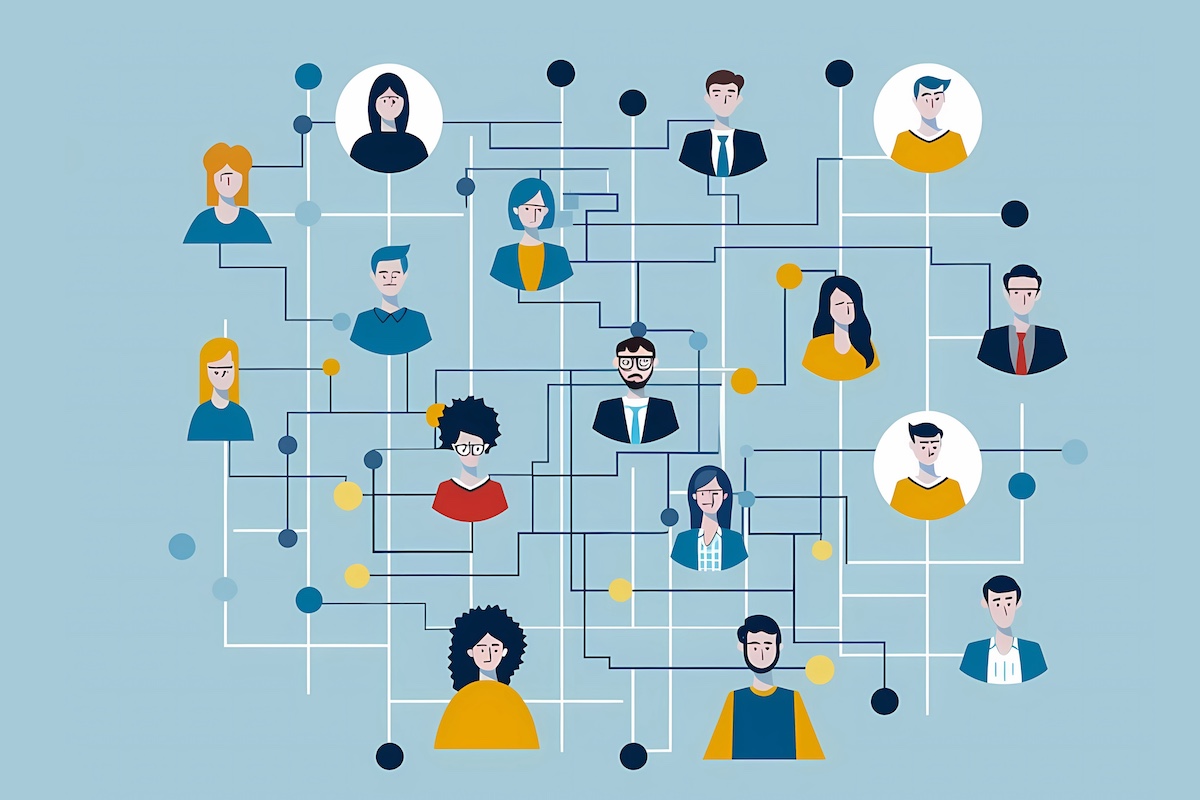B2B buying groups are larger than ever. Ten to fifteen years ago, a seller could huddle up with three or four decision makers and quickly decide on a purchase. Now, it’s like a packed corporate strategy meeting where every department sends a representative—each with an opinion and veto power.
- Since 2010, the average buying group has grown from three to four decision makers to six to 10 according to research by Gartner.
- 77% of B2B buyers report their last purchase was complex, involving multiple stakeholders.
- Decision-making time, compared to five to seven years ago, has increased by 60%.
Multiple factors are driving this change. Business products and services are more complicated, especially technologies. Greater financial risk requires buyers to collaborate more across functions and conduct deeper due diligence.
The implications for sellers are significant. More stakeholders means longer sales cycles. There’s a greater need for consensus-building and for value propositions that speak to a wider range of roles. Sellers need sophisticated communication and consultative skills to understand varying stakeholder needs.
The buyer’s journey has become a complex negotiation requiring diplomacy, deep understanding, and the ability to build cross-functional consensus. Your sales professionals are no longer presenting to a few players; they’re now performing for a panel of diverse stakeholders—each with their own expectations, requirements, and priorities.
Here’s a deep dive into buying groups, critical selling skills, and sales training best practices to prepare your sales team for success with multiple stakeholders.
B2B Buying Group Stakeholders
A successful sale starts with understanding the organization and how each department and stakeholder relates to the others. Here’s a breakdown of a typical B2B buying committee and communication strategies.
1. Executive Leadership (CEO, COO, CFO, CRO)
Leadership stakeholders want to know how a product or service aligns with the company’s overall strategy. They’re looking for ROI and big-picture value. Sellers need to provide total cost of ownership and demonstrate how their offering will give the company a competitive advantage and have long-term business impact.
Prepare This: High-level financial and strategic benefits, executive summaries
2. Procurement/Purchasing Managers
These key players focus on cost efficiency, vendor reliability, and contract terms. They will compile and evaluate a list of potential vendors, negotiate price, and seek to mitigate risk.
Prepare This: Transparent pricing, clear contract terms, vendor credibility evidence
3. Finance/Budget Managers
The money folks need to provide financial justification, budget alignment, and a cost-benefit analysis. They focus on return on investment and assess financial risk to the company.
Prepare This: Clear ROI models, financial impact projections, cost savings calculations
4. Technical Decision Makers (CTO, IT Director, Engineering Manager)
Depending on the product or service, these stakeholders need to understand technical feasibility, integration capabilities, and performance specifications. They’re looking for compatibility with current systems, scalability, and technical innovation.
Prepare This: Detailed technical specifications, proof of concept, compatibility demonstrations
5. Operations Executives
These managers seek operational efficiency and ease of implementation. They may focus on training requirements, workflow integration, and/or productivity improvements, and they want to minimize disruptions.
Prepare This: Implementation roadmap, efficiency metrics, training support
6. End Users/Department Specialists
These influencers are at the front lines of functionality, user experience, and overall capabilities. They’re looking for daily workflow improvements and ease of use.
Prepare This: Specific use cases, practical demonstrations, user testimonials
7. Risk/Compliance Managers
These participants play a significant role in regulated industries such as medical devices or financial services. They must verify regulatory compliance, security protocols, and they must mitigate risk. Their focus is on legal requirements and reducing potential liability.
Prepare This: Compliance certifications, security documentation, risk management strategies
8 Essential Skills for Selling to B2B Buying Groups
Your sellers will need sophisticated interpersonal and analytical capabilities to manage B2B purchasing environments. That’s why consultative selling is critical for large buying groups. Sellers must be able to position themselves as trusted solution partners, provide high-level strategic insights, and go beyond a transactional approach.
Sellers must provide unique insights beyond product features and help buyers understand broader business implications. This means a shift from transactional to strategic partnerships.
Sellers who master consultative skills are significantly more likely to win complex sales involving multiple stakeholders, navigate extended decision cycles, and create long-term business relationships. These skills are essentially make-or-break for complex sales scenarios.
1. Relationship Management
Sellers must be able to network across all organizational levels, maintain ongoing communication, and identify and nurture internal advocates.
2. Active Listening
Sellers must be able to understand individual stakeholder concerns, identify unstated needs and wants, and synthesize the perspective of every player in the buying group.
3. Strategic Communication
Sellers must be able to craft tailored messaging for each role, present value propositions that resonate with every stakeholder, and connect tactical and strategic goals.
4. Data Analysis
Sellers must be able to develop compelling ROI models, use metrics to validate value, and translate technical data for different audiences.
5. Negotiation Skills
Sellers must be able to navigate conflicting stakeholder priorities, find win-win solutions, and manage the consensus-building process.
6. Product Acumen
Sellers must have deep industry knowledge and fully understand their product and/or service so they can translate technical features into business benefits and credibly discuss complex solutions.
7. Emotional Intelligence
Sellers must be able to read stakeholder dynamics, adapt their communication style, and build rapport with different personality types.
8. Patience and Persistence
Lastly, it takes fortitude to manage extended sales cycles, maintain momentum, and stay responsive to evolving requirements of corporate decision makers.
Training Best Practices for Complex B2B Sales
Sales leaders must equip sellers with deep industry knowledge and the skills to navigate complex sales environments. Comprehensive, ongoing training that focuses on communication, flexibility, strategic problem-solving, and emotional intelligence will set your sellers up for success with large buying groups.
Here are a few ways to enhance your sales training:
Experiential Learning: Role-playing multi-stakeholder scenarios, simulated customer interactions, and peer feedback sessions will give your sellers the chance to practice before they’re in front of a prospect.
Strategic Training: Workshops in storytelling, emotional intelligence, objection handling, and relationship building—as well as programs that develop business acumen (or technical certification if needed)—will give your sellers the skills they need to speak confidently.
Sales Coaching: One-on-one skill development, shadowing top performers, and personalized skill gap assessments will help sellers enhance their sales skills.
Technology-Enabled Learning: AI-powered sales simulations, micro-learning modules, and self-guided eLearning will allow sellers to reinforce new skills.
Continuous Assessment: Regular skill competency evaluation and performance tracking will provide insight into seller proficiency and help personalize training.
Sales Training Programs that Drive Success
The Brooks Group’s award-winning IMPACT Selling program helps sales professionals take their skills to the next level. Find out how to drive success with a proven sales process and foundational skills to build strategic relationships with customers and prospects.




